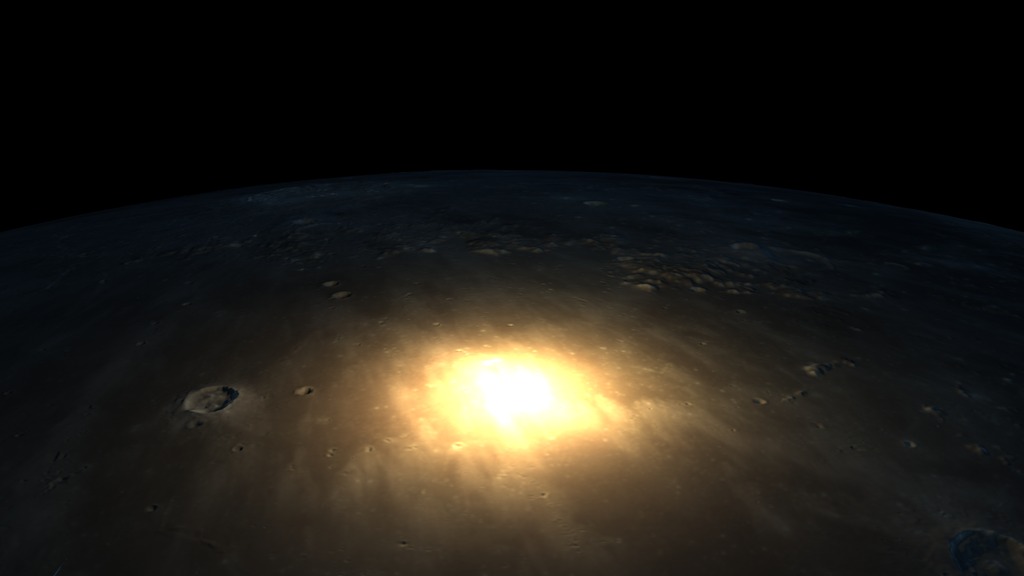Gardening Rates on the Moon
After simulating the distant view of a new impact, the camera zooms up to the surface to show actual before/after images of a new 12-meter crater taken by the Lunar Reconnaissance Orbiter narrow-angle camera. (The impact that formed this crater wasn't seen from Earth, but a different one was.)
No, not that kind of gardening. In this case, gardening
refers to the mixing and disturbance of the top layers of lunar regolith that happens when impacts form new craters. The material excavated from the crater site is sprayed in all directions, creating secondary craters and splats of lighter and darker dust on the surface.
The narrow-angle camera (LROC NAC) aboard Lunar Reconnaissance Orbiter (LRO) has photographed a large percentage of the Moon's surface multiple times. By looking for differences between earlier and later images, the LROC team has found over 200 new craters large enough for the camera to see (at least 5 meters in diameter), as well as thousands of what they call splotches,
many of which are likely caused by smaller craters.
In a paper in the October 13, 2016 Nature, Emerson Speyerer and his coauthors divide the crater ejecta into four zones that differ in brightness and distance from the crater, and they explain the processes involved in the formation of each zone. They also use the number of craters and splotches to infer the gardening rate, the rate at which the top few centimeters of regolith is churned and replaced by impacts. Their conclusion is that this is happening over 100 times faster than previously thought.
The visualization simulates the formation of one of the craters featured in the paper. We first see a flash, then zoom all the way to the surface, where the animation blinks between the actual before and after LROC NAC images (M1105837846R and M1121160416R) that were used to detect this new 12-meter crater. Finally, we see the ratio of the two images, which very clearly shows both the new crater and the radial pattern of ejecta.
Credits
Please give credit for this item to:
NASA's Scientific Visualization Studio
-
Visualizer
- Ernie Wright (USRA)
-
Scientists
- Mark Robinson (Arizona State University)
- Emerson J. Speyerer (Arizona State University)
-
Producer
- Katrina Jackson (USRA)
Release date
This page was originally published on Thursday, October 13, 2016.
This page was last updated on Sunday, March 9, 2025 at 12:06 AM EST.
Missions
This page is related to the following missions:Series
This page can be found in the following series:Related papers
E Speyerer et al., Quantifying crater production and regolith overturn on the Moon with temporal imaging. Nature 538, 215-218 (13 October 2016)
E Speyerer et al., Quantifying crater production and regolith overturn on the Moon with temporal imaging. Nature 538, 215-218 (13 October 2016)
Datasets used
-
NAC (Narrow Angle Camera) [LRO: LROC]
ID: 652 -
DEM (Digital Elevation Map) [LRO: LOLA]
ID: 653 -
WAC 643nm High Sun Global Mosaic [LRO: LROC]
ID: 803 -
LROC WAC Global Morphological Map (Global Morphological Map) [Lunar Reconnaissance Orbiter: Wide-Angle Camera]
ID: 926
Note: While we identify the data sets used on this page, we do not store any further details, nor the data sets themselves on our site.
